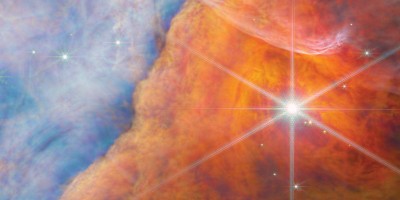Unfettered access to dark night skies is rapidly diminishing, due to light pollution and satellite constellation tracks. Scientists should do more to stand up to ‘big light’ and ‘big space’ and preserve this natural resource.


M. Lewinsky/Creative Commons Attribution 2.0
References
1979 Convention on Long-Range Transboundary Air Pollution (United Nations, 1996); https://unece.org/sites/default/files/2021-05/1979%20CLRTAP.e.pdf
Report on the Work of the Seventieth Session (2018) (International Law Commission, 2022); https://legal.un.org/ilc/reports/2018/
Cinzano, P. & Falchi, F. J. Quant. Spectrosc. Radiat. Transf. 139, 13–20 (2014).
Bará, S., Bao-Varela, C. & Falchi, F. Atmos. Pollut. Res. 13, 101541 (2022).
Steinbach, R. et al. J. Epidemiol. Community Health 69, 1118–1124 (2015).
Marchant, P. Significance 16, 8–9 (2019).
Falchi, F. et al. Mon. Not. R. Astron. Soc. https://doi.org/10.1093/mnras/stac2929 (in the press).
Smith, F. Trans. Int. Astron. Union 17, 218–222 (1979).
Dark and Quiet Skies for Science and Society: Report and Recommendations (International Astronomical Union, 2020). https://www.iau.org/static/publications/dqskies-book-29-12-20.pdf
Walker, C. & Benvenuti, P. (eds) Dark and Quiet Skies II Working Group Reports (NOIRLab, 2022). https://doi.org/10.5281/zenodo.5874725
Oreskes, N. & Conway, E. M. Merchants of Doubt: How a Handful of Scientists Obscured the Truth on Issues from Tobacco Smoke to Global Warming (Bloomsbury, 2010).
Michaels, D. The Triumph of Doubt: Dark Money and the Science of Deception (Oxford Univ. Press, 2020).
Krajewski, M. The great lightbulb conspiracy. IEEE Spectrum (24 September 2014); https://spectrum.ieee.org/the-great-lightbulb-conspiracy
Bará, S., Falchi, F., Lima, R. & Pawley, M. Environ. Chall. 5, 100212 (2021).
Falchi, F. & Bará, S. Nat. Sci. 1, e10019 (2021).
Falchi, F. & Bará, S. R. Soc. Open Sci. 7, 201501 (2020).
Kocifaj, M., Kundracik, F., Barentine, J. & Bará, S. Mon. Not. R. Astron. Soc. 504, L40–L44 (2021).
Encouraging International Support for the Recovery and Use of Space Resources US President Executive Order 13914 of 6 April 2020 (Federal Register, 2020).
Marín, C. & Jafari, J. (eds) StarLight: A Common Heritage (Instituto de Astrofísica de Canarias, 2008).
Acknowledgements
We would like to thank P. Marchant and S. Gallozzi for interesting discussions.
Author information
Authors and Affiliations
Corresponding author
Ethics declarations
Competing interests
F.F. is the President of CieloBuio (an unpaid position); the other authors declare no competing interests.
Rights and permissions
About this article
Cite this article
Falchi, F., Bará, S., Cinzano, P. et al. A call for scientists to halt the spoiling of the night sky with artificial light and satellites. Nat Astron 7, 237–239 (2023). https://doi.org/10.1038/s41550-022-01864-z
Published:
Issue Date:
DOI: https://doi.org/10.1038/s41550-022-01864-z
- Springer Nature Limited
This article is cited by
-
Monitoring, trends and impacts of light pollution
Nature Reviews Earth & Environment (2024)


